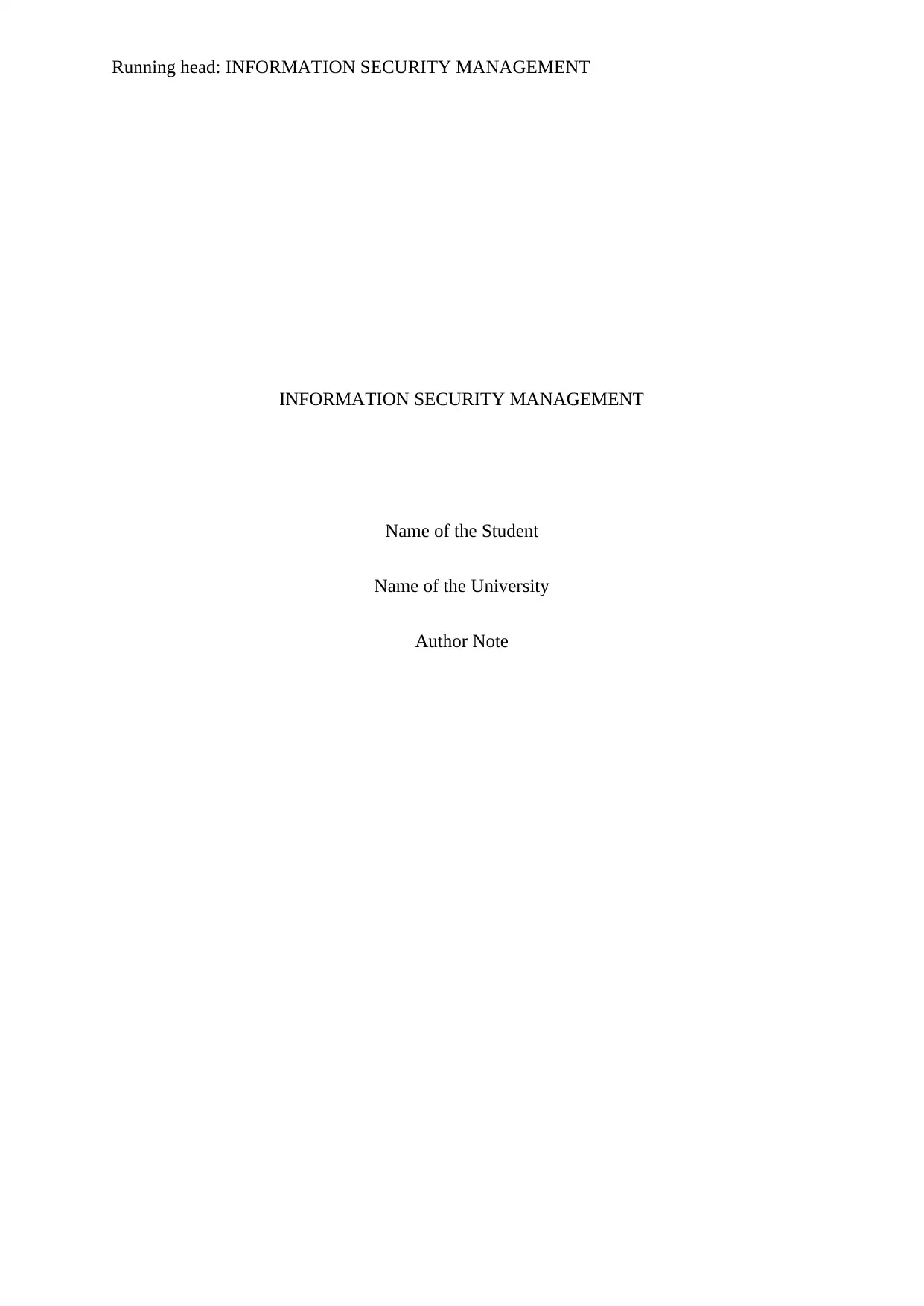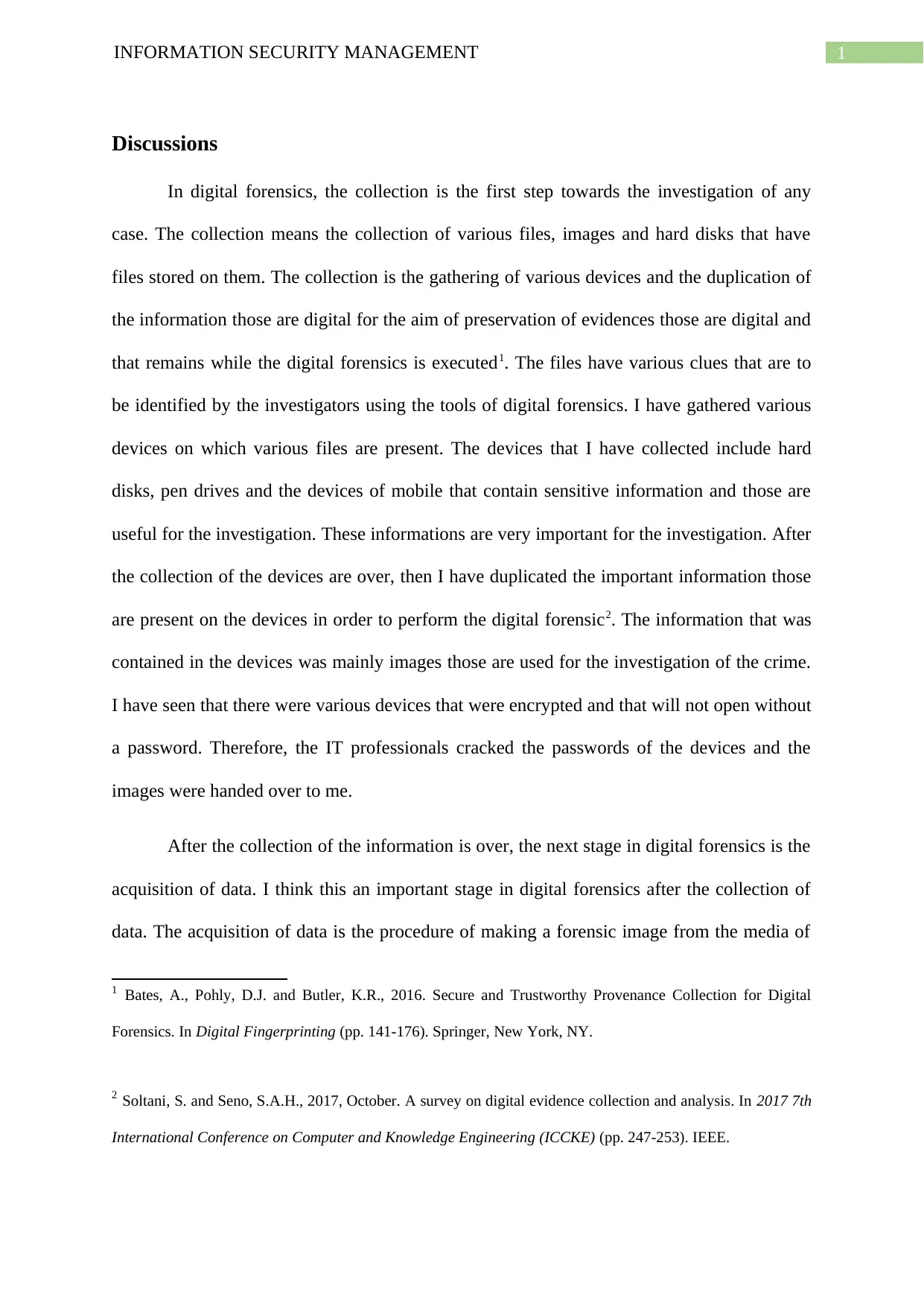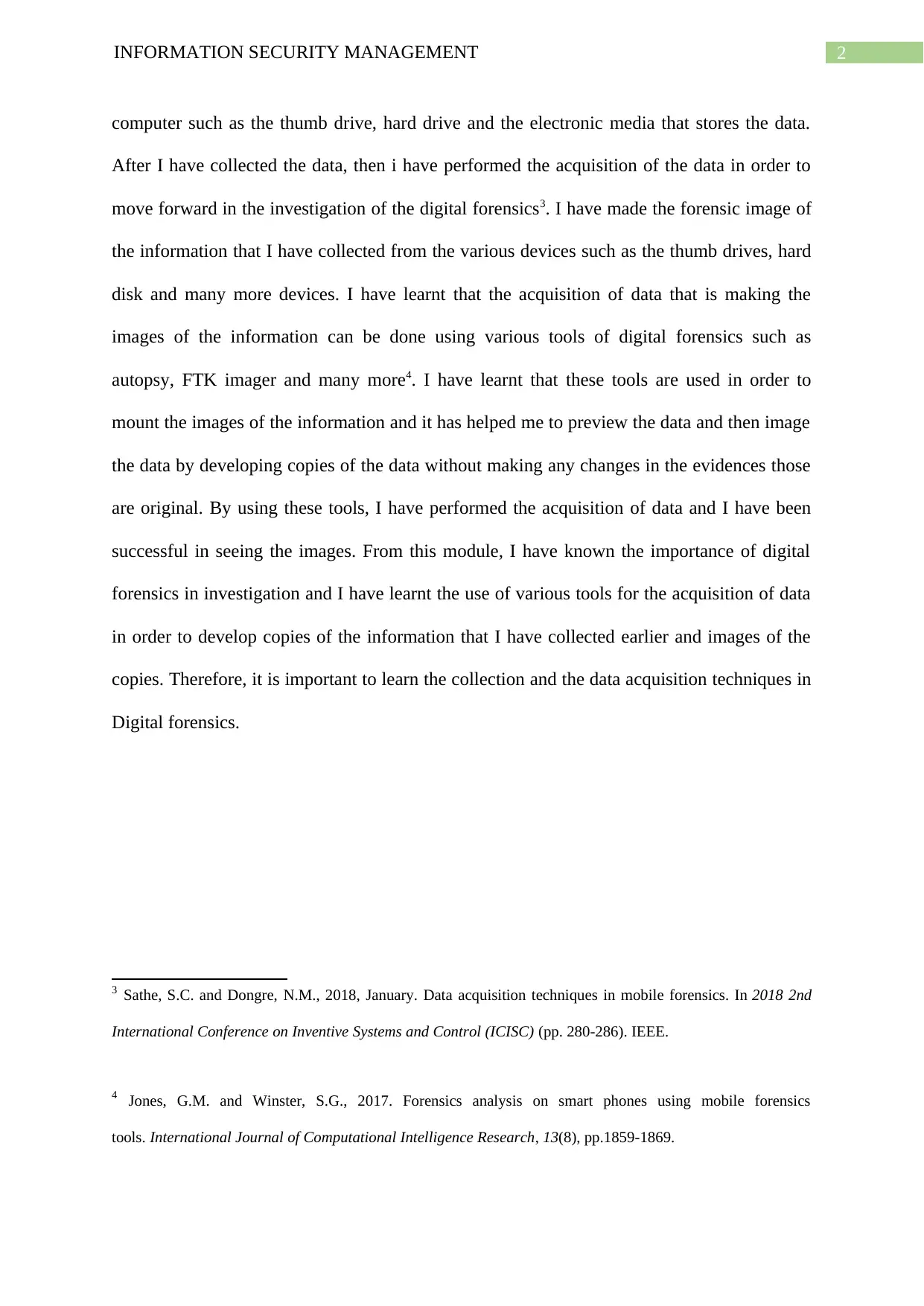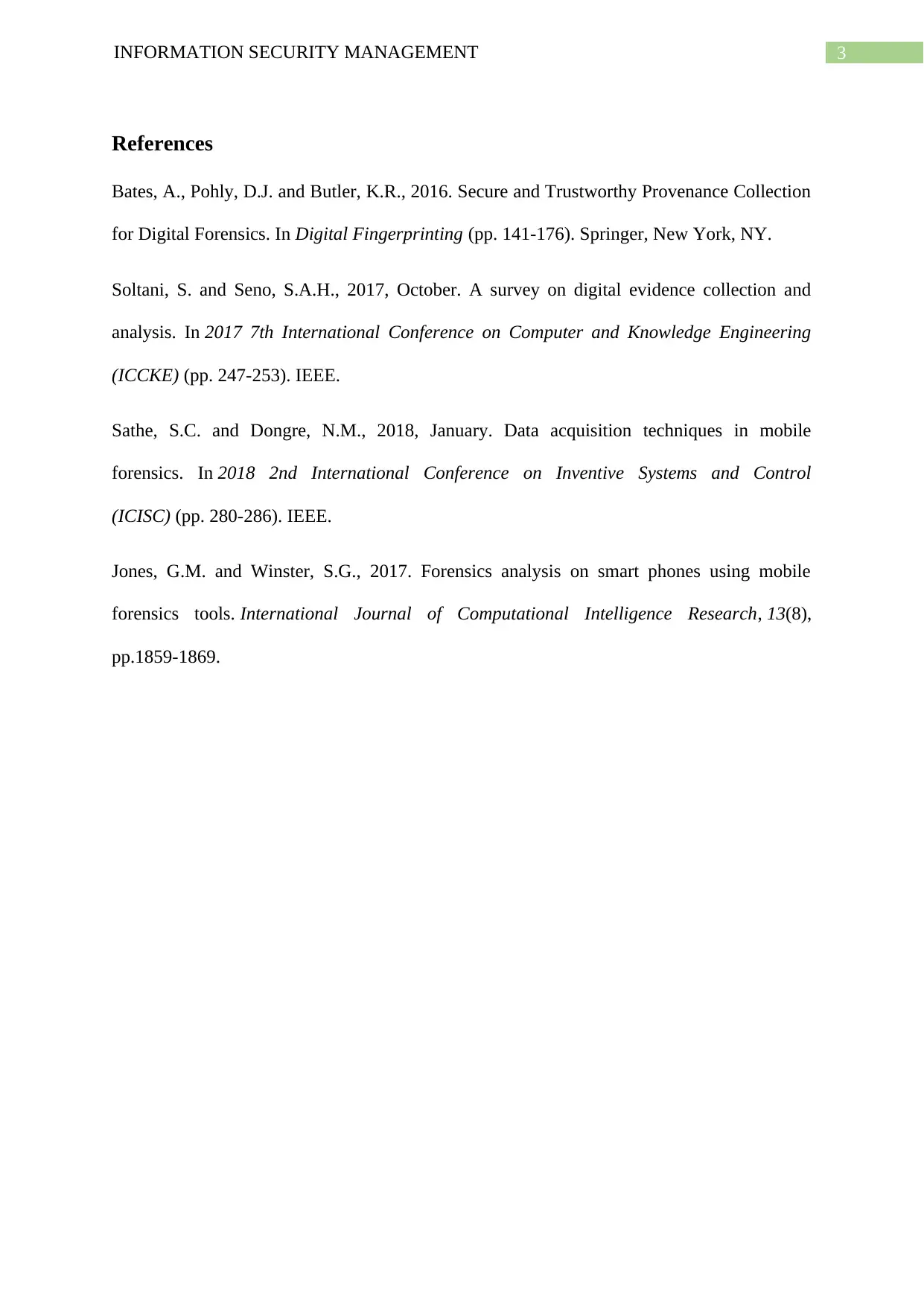Information Security Management and Compliance DF Portfolio
VerifiedAdded on 2022/08/27
|4
|716
|42
Project
AI Summary
This project, a student assignment for the Information Security Management module, explores the initial stages of digital forensics, specifically focusing on data collection and acquisition. The assignment details the process of gathering digital evidence from various devices such as hard disks, pen drives, and mobile devices, emphasizing the importance of preserving the integrity of the evidence through duplication. It then delves into the data acquisition phase, where forensic images are created using tools like Autopsy and FTK Imager. The student highlights the significance of these tools in creating copies of data without altering the original evidence, demonstrating an understanding of the critical role of data acquisition in digital investigations. The assignment showcases the student's learning in the practical application of digital forensics tools and techniques, reinforcing the importance of these skills in the field of information security.
1 out of 4











![[object Object]](/_next/static/media/star-bottom.7253800d.svg)